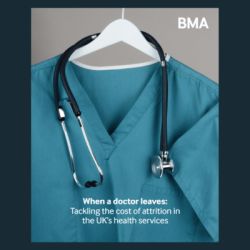New research shows that, in the primary care setting, both patients and practitioners perceive patient safety more in terms of work functions, which reflect grouping of tasks or responsibilities in delivery of care.
You might also like:Future of Patient Safety: What We’ve Learned from the Pandemic
In this study (Lai et al. 2020), researchers conducted interviews with 101 frontline clinicians, administrators and staff, and focus groups with 65 adult patients at ten patient-centred medical homes (PCMHs). Using thematic analysis of interview scripts, the researchers identified five work functions (themes) on how frontline personnel and patients conceptualise the meaning of patient safety in primary care:
- Patient safety as not causing harm. Personnel regard patient safety as not causing harm to patients when providing care, with emphasis on the effects of medications and procedures. Patients recognised the importance of having their healthcare providers pay attention to their medications in particular, to avoid any adverse effects.
- Patient safety as viewing patients' needs holistically. Personnel viewed patient safety as considering patient needs from various aspects, which included primary and specialist care needs, mental health needs, etc. Patients emphasised the need for clinicians to "look at the whole picture and know the right questions to ask".
- Patient safety as providing appropriate and timely care. Practitioners also emphasised delivering care that was "right", elaborated in terms of appropriateness and timeliness. For patients, there was an expectation of having their clinical conditions addressed with appropriateness and timeliness when receiving care.
- Patient safety as ensuring physical safety and informational security. The concept of patient safety also extended to the infrastructure of the practice environment (i.e. mitigating fall risks) and protection of patient information from unintended use.
- Patient safety as communicating attentively. This theme emerged from the patient focus groups, but was nonnarrated in the personnel interview data.
These function-based perceptions of patient safety in primary care, according to study authors, may better reflect frontline personnel and patients' experiences than experts' perspectives based on these key safety domains: medications, diagnoses, transitions, referrals and testing. "This study instead demonstrates that personnel conceptualise patient safety more in terms of work functions that traverse these domains," the authors point out.
At the time of study, the ten PCMHs – where data were collected – had achieved level 3 status in the National Committee for Quality Assurance (NCQA) PCMH recognition programme. This means these PCMHs were performing at the highest level (there were 3 levels in total) based on six aspects of primary care delivery, including patient access, team-based care, care management and support, care coordination, quality improvement, and population health management.
"By systematically investigating how frontline clinicians, administrators, staff, and patients conceptualise patient safety in primary care, this study responds to calls to include the patient perspective in patient safety research and seeks to provide some foundational context that may help advance future patient safety efforts in primary care," the authors conclude.
Image credit: SDI Productions via iStock



























